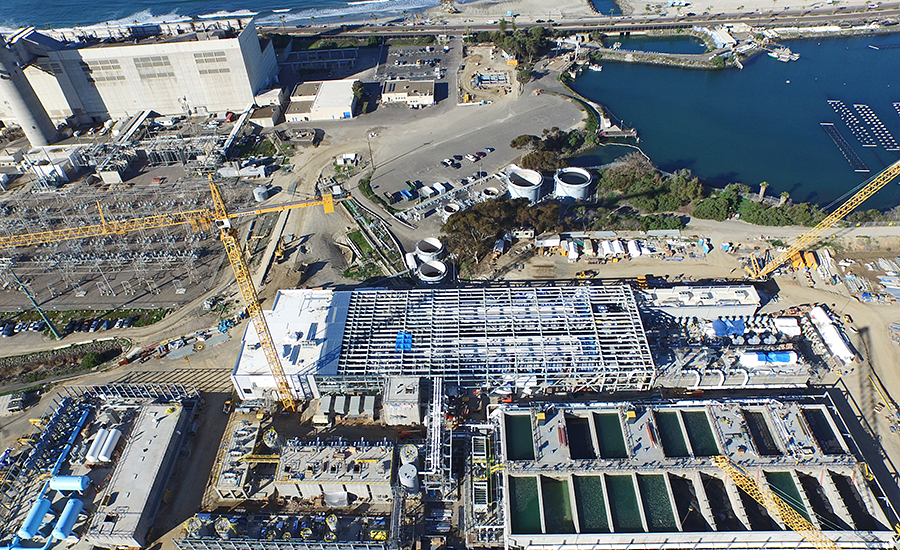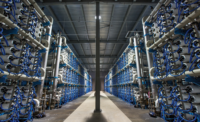With the successful completion of the $1-billion seawater desalination plant in Carlsbad, Calif., the project’s developer is moving forward with plans to build a second plant at Huntington Beach.
Water began running through the 54-million-gallon-a-day Carlsbad desalination plant in December, and the plant has been running smoothly since then, according to Bob Yamada, the San Diego County Water Authority’s (SDCWA) water-resources director. The water will provide 10% of the water supply to local residents and is part of the authority’s strategy to diversity the region’s water-supply portfolio.
“This has been over 15 years in the making, so it is something where we are all very pleased and proud,” says Peter MacLaggan, vice president of Poseidon Water (see related story, p. 34).
Though the project is complete, modifications are planned. The NRG Encina Power Station, where the Carlsbad desalination facility is co-located, will be shutting down at the end of 2017. As a result, Poseidon is seeking additional permits to make approximately $30 million in modifications to enable the desalination plant to operate as a stand-alone facility. Those modifications include building a new pump station, installing additional screens on the already existing intake, and replumbing the intake and discharge pipelines. “We’ve got a year’s worth of permitting work, so our goal is that, by the fall of next year, [we will] have secured all the permits, completed a procurement process and [be able to] proceed with the final engineering and construction,” MacLaggan says.
Further, Poseidon is moving forward with its permit application to build a 50-mgd plant at Huntington Beach. Last May, the State Water Resources Control Board enacted new regulations that require permit applicants for desalination facilities to consider and use the best available site design and technology to minimize impacts on wildlife.
Environmental advocates have long pushed for subsuface sea intakes, also called “sea-floor intake galleries,” as opposed to fish screens on intakes, as a way to minimize harm to wildlife. But local businesses have questioned whether subsurface intakes are cost-effective. The Coastal Commission, the permitting authority in Huntington Beach, asked for an additional analysis to look at the viability of both approaches. Arcadis, which provided the wrap-around design of the Carlsbad desalination plant, helped Poseidon with a side-by-side comparison of the costs and feasibility of small-diameter fish screens versus subsurface sea intakes, which require digging beneath the ocean floor, installing pipes and then covering them with sand, says Doug Owen, executive vice president and chief technology officer at Arcadis. “This is not shallow water you are putting [the pipes] in. You’re going out maybe 100 feet in depth, and you’ve got to dig up that floor. So, the constructibility of it and the timeframes were a big issue,” he says.
In November, the panel concluded the subsurface intake would not be feasible, “primarily because it would add another $1 billion to the cost of the project,” MacLaggan says. Since then, Poseidon has re-applied for a permit with the Coastal Commission, and public hearings are expected some time this spring.
SDCWA is conducting a similar comparison study of its own, says Yamada. In December, the firm Michael Baker announced it had been selected to design, build and operate a pilot-scale desalination facility at Camp Pendleton for the authority to test the two intake approaches. Yamada says the growing interest in the direct and indirect potable reuse of wastewater by member agencies—such as the city of San Diego, with its PURE water program—has put a potential desalination facility at Camp Pendleton on a more long-term trajectory. That said, Yamada notes, “We’re continuing to look at some of the issues relating to a potential Camp Pendleton project,” he says.



